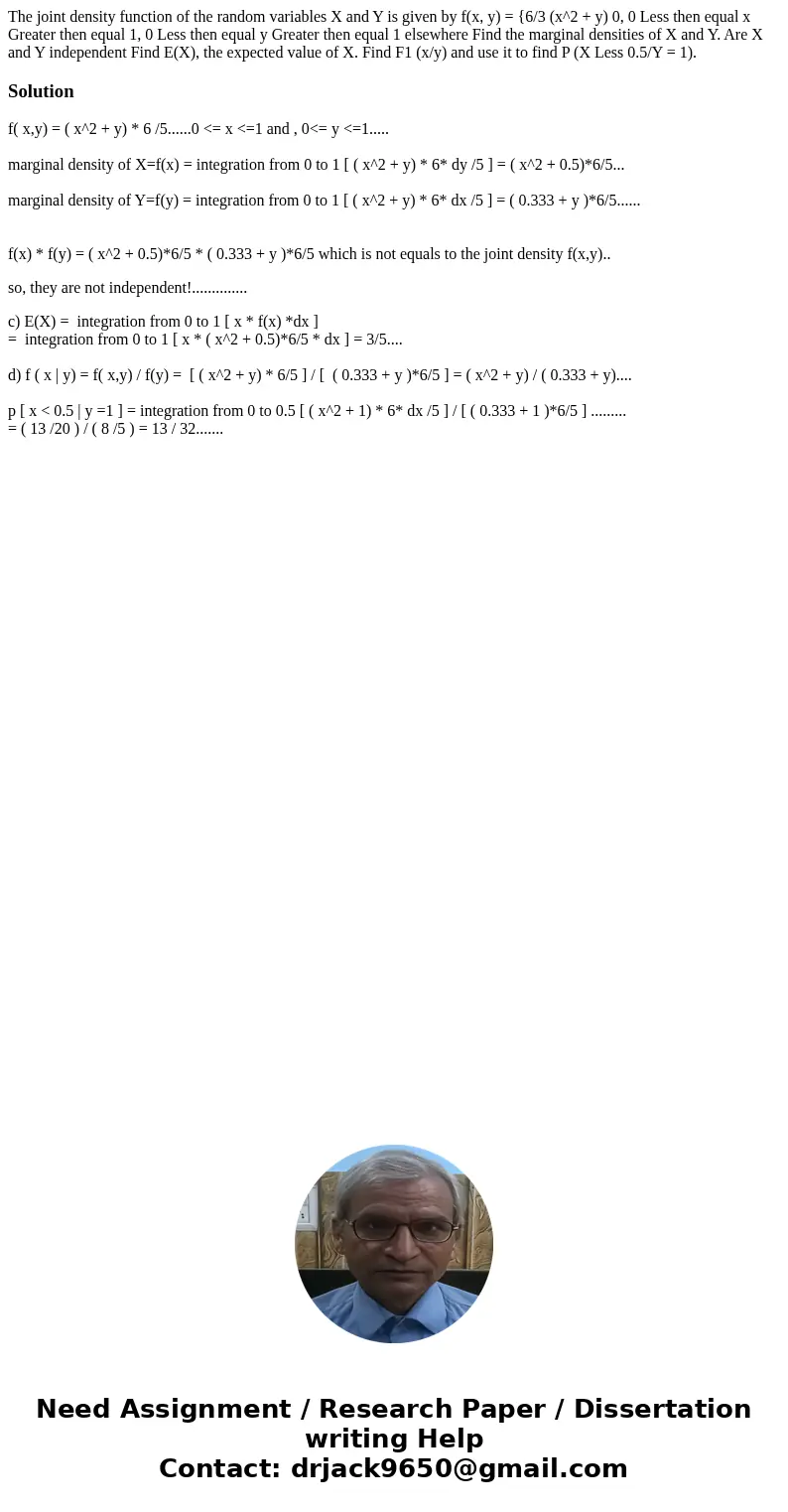The joint density function of the random variables X and Y i
Solution
f( x,y) = ( x^2 + y) * 6 /5......0 <= x <=1 and , 0<= y <=1.....
marginal density of X=f(x) = integration from 0 to 1 [ ( x^2 + y) * 6* dy /5 ] = ( x^2 + 0.5)*6/5...
marginal density of Y=f(y) = integration from 0 to 1 [ ( x^2 + y) * 6* dx /5 ] = ( 0.333 + y )*6/5......
f(x) * f(y) = ( x^2 + 0.5)*6/5 * ( 0.333 + y )*6/5 which is not equals to the joint density f(x,y)..
so, they are not independent!..............
c) E(X) = integration from 0 to 1 [ x * f(x) *dx ]
= integration from 0 to 1 [ x * ( x^2 + 0.5)*6/5 * dx ] = 3/5....
d) f ( x | y) = f( x,y) / f(y) = [ ( x^2 + y) * 6/5 ] / [ ( 0.333 + y )*6/5 ] = ( x^2 + y) / ( 0.333 + y)....
p [ x < 0.5 | y =1 ] = integration from 0 to 0.5 [ ( x^2 + 1) * 6* dx /5 ] / [ ( 0.333 + 1 )*6/5 ] .........
= ( 13 /20 ) / ( 8 /5 ) = 13 / 32.......

 Homework Sourse
Homework Sourse